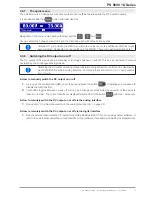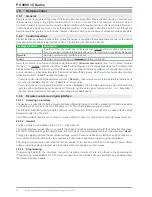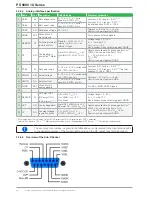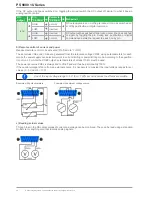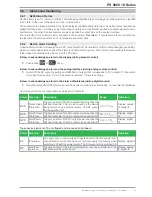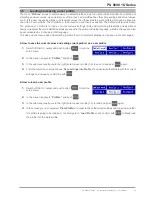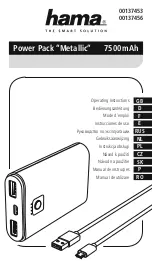
30
PS 9000 1U Series
© 2015 Intepro Systems, LP. Specifications subject to change without notice.
3.3
Alarm conditions
This section only gives an overview about device alarms. What to do in case your device indi-
cates an alarm condition is described in section “3.6. Alarms and monitoring”.
As a basic principle, all alarm conditions are signalled optically (Text + message in the display), acoustically (if
activated) and as a readable status via the digital interface. With any alarm occurring, the DC output of the device
is switched off. In addition, the alarms OT and OVP are reported as signals on the analogue interface.
3.3.1 Power Fail
Power Fail (PF) indicates an alarm condition which may have various causes:
•
AC input voltage too high (mains overvoltage) or too low (mains undervoltage, mains failure)
•
Defect in the input circuit (PFC)
Switching off the device by the mains switch cannot be distinguished from a mains blackout and
thus the device will signal a PF alarm every time the device is switched off. This can be ignored.
3.3.2 Overtemperature
An overtemperature alarm (OT) can occur if
•
an excess temperature inside the device causes the DC output to switch off.
Internal overtemperature and subsequent temporary shutdown is usually caused by insufficient cooling (excess
ambient temperature, fans and air inlets polluted). The fans will still cool down the unit until it can automatically
switch on again to continue operation.
3.3.3 Overvoltage
An overvoltage alarm (OVP) will switch off the DC output and can occur if
•
the power supply itself, as a voltage source, generates an output voltage higher than set for the overvoltage
alarm limit (OVP, 0...110% U
Nom
) or the connected load somehow returns voltage higher than set for the overvolt-
age alarm limit
•
the OV threshold has been adjusted too close above the output voltage. If the device is in CC mode and if it
then experiences a negative load step, it will make the voltage rise quickly, resulting in an voltage overshoot for
a short moment which can already trigger the OVP
This function serves to warn the user of the power supply acoustically or optically that the device probably has
generated an excessive voltage which could damage the connected load application.
The device is not fitted with protection from external overvoltage. Overvoltage can
damage parts inside!
3.3.4 Overcurrent
An overcurrent alarm (OCP) will switch off the DC output and can occur if
•
the output current in the DC output reaches the adjusted OCP limit.
This function serves to protect the connected load application so that this is not overloaded and possibly damaged
because of an excessive current.
3.3.5 Overpower
An overpower alarm (OPP) will switch off the DC output and can occur if:
•
the product of the output voltage and output current in the DC output reaches the adjusted OPP limit.
This function serves to protect the connected load application so that this is not overloaded and possibly damaged
due to an excessive power consumption.
Summary of Contents for PS 9080-100 1U
Page 2: ......






















